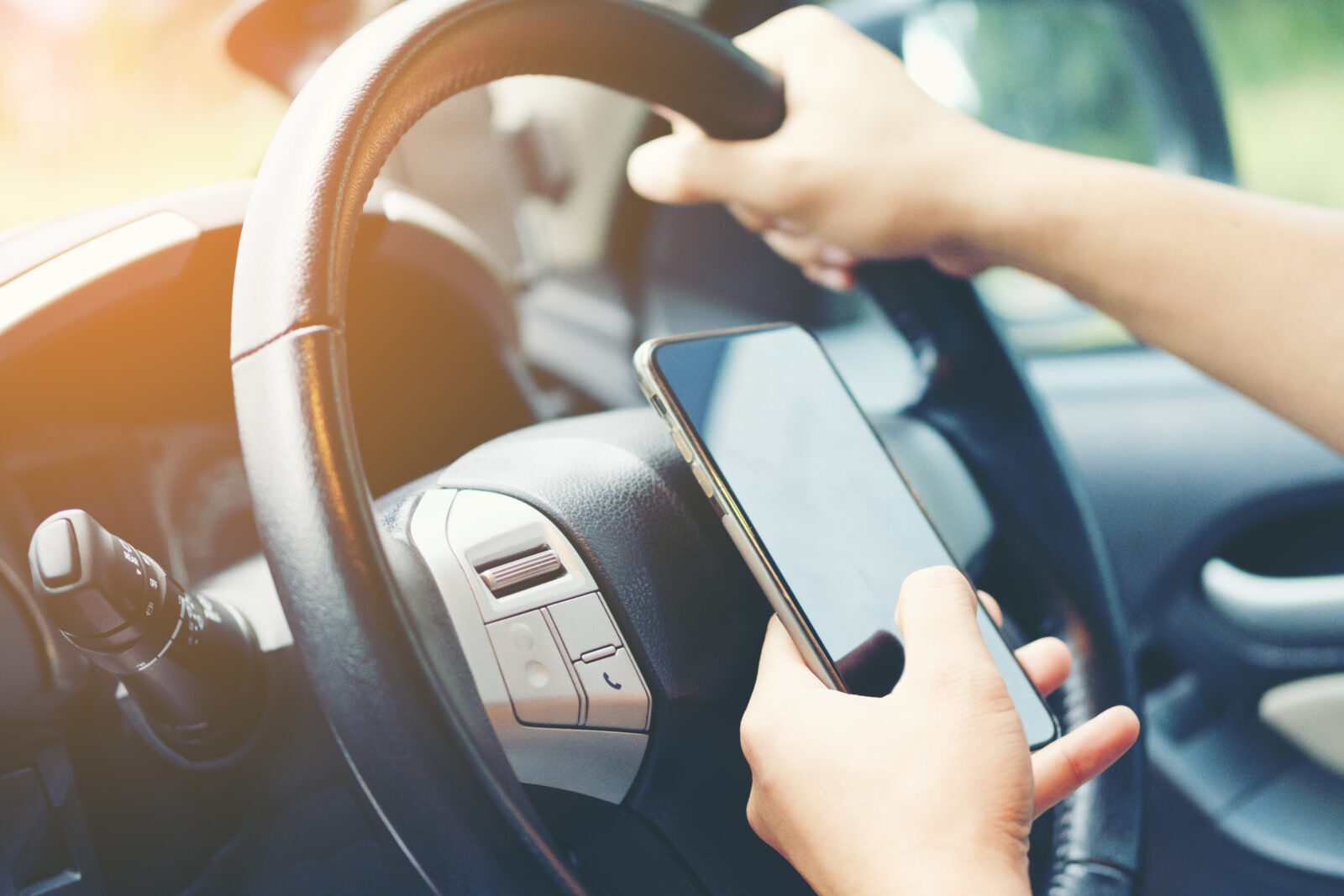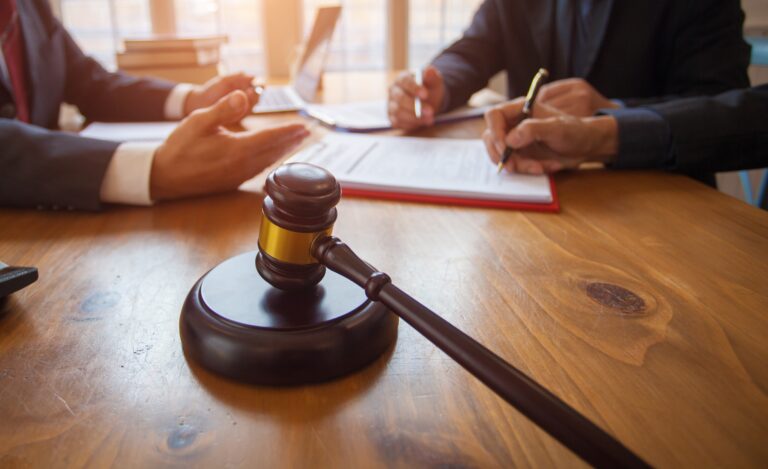By Failing to Fully Admit Liability, The Door to Distracted Driving Evidence (Cell Phone Use), May Be Opened
From the Desk of Jeff Eberhard:
Can a defendant admit “responsibility” for “causing the accident” and keep out the fact she was on her cell phone at the time? What if Plaintiff alleges that Defendant who caused a rear-end collision should be liable for her suicide attempt? Can the Defendant argue that the attempted suicide was not foreseeable and keep out evidence of her cell phone use? These questions are answered in this legal alert.
Claims Pointer:
Defendant argued that since she admitted responsibility for the accident, evidence of what she was doing at the time – looking down at her cell phone – should not be admitted into evidence. The Court held that by only admitting “responsibility” the defendant did not actually admit liability, nor did she admit that a suicide attempt was a foreseeable risk. This opened the door for the court to hold that the evidence of what Defendant was doing at the time of the accident was necessary to determine foreseeability, meaning the jury could hear that she was driving distracted at the time of the accident.
Scott v. Kesselring., 370 Or 1 (2022).
Facts:
The underlying facts of this case involve Defendant rear-ending Plaintiff’s vehicle. At the time of the collision, the roads were slick from rain and Defendant was attempting to use her cellphone to make a non-emergency call before rear-ending Plaintiff. Plaintiff brought negligence claims against Defendant alleging that Defendant caused Plaintiff physical injuries, as well as severe emotional distress which ultimately led her to attempt suicide.
In Defendant’s answer, Defendant admitted that she was “responsible for causing the accident” but denied that she was responsible for the full extent of Plaintiff’s injuries and damages. Before trial, Defendant filed a motion in limine asking the court to exclude all mention of her cellphone use as irrelevant. Defendant argued that she had admitted negligence and was only contesting the extent of Plaintiff’s injuries and the foreseeability of Plaintiff’s suicide attempt, thus cellphone use was irrelevant. The trial court denied the motion.
The jury awarded Plaintiff damages of $241,000. Defendant appealed arguing that the trial court erred in its decision to admit evidence that Defendant had used her phone before the collision. The Court of Appeals concluded that the trial court had erred in admitting the evidence of cell phone use and that a new trial was necessary. Plaintiff petitioned the Oregon Supreme Court for review.
Law:
To prevail on a negligence claim, a plaintiff must prove that (1) the defendant had a duty to the plaintiff, (2) the defendant breached that duty, (3) the breach caused a foreseeable and unreasonable risk of harm, and (4) the breach in fact caused that kind of harm to the plaintiff.
As a rule, in Oregon, when a defendant is liable for the type of harm that a plaintiff suffers, the defendant is liable for the entirety of that harm, even when the extent of the harm is not foreseeable.Restatement (Third) of Torts: Physical and Emotional Harm, §29 comment p (2010).
Analysis:
The Oregon Supreme Court began its analysis with the question of whether the trial court erred in ruling that the evidence of cell phone use was admissible on the issue of foreseeability. Defendant argued that the trial court did err because she had admitted negligence and fault, rendering evidence of the elements of Plaintiff’s claim irrelevant. Defendant further contended that the only aspect of foreseeability at issue was whether it was foreseeable that the collision would cause the extent of harm Plaintiff suffered, particularly her suicide attempt.
The Court found that Defendant’s answer did not constitute an admission of negligence or fault. The Court noted that Defendant did not actually admit she was negligent in the ways alleged by Plaintiff or that Plaintiff was entitled to a judgment on her negligence claims. Defendant only admitted responsibility for causing the accident, which is kind of like saying “you’re sorry” but not admitting it was your fault. Defendant’s denial of responsibility for the full extent of Plaintiff’s alleged injuries was not an admission that she was liable for some or any of Plaintiff’s injuries. The Court held that foreseeability is an aspect of liability, and while Defendant admitted some level of responsibility, Defendant disputed foreseeability.
The Court then addressed the distinction between the extent of a plaintiff’s harm and the type of harm that a plaintiff suffers. The Court stated that the extent of harm does not need to be foreseeable while the type of harm may. Thus, if a defendant is liable for the physical injuries that she caused a plaintiff she would be liable even if the injuries were more extensive than reasonably anticipated. On the other hand, if a plaintiff suffered injuries of a type of harm not reasonably anticipated, the foreseeability element may be at issue.
The Court then gave the Defendant the benefit of the argument that she could have made – the foreseeability of the type of harm rather than the extent. With that argument in mind, the Court analyzed whether Defendant’s contention that her conduct before the collision was not relevant to that inquiry was correct. The Court did not agree with Defendant.
The Court found that when a defendant admits responsibility for harm, but contests liability for subsequent conduct and harm, foreseeability is still at issue as there is still an inquiry of whether the defendant’s conduct unreasonably created a foreseeable risk. This inquiry must consider the nature of a defendant’s conduct. Thus, even if the Court construed Defendant’s argument as a challenge to the foreseeability of the type of harm Plaintiff suffered – a suicide attempt- Defendant’s conduct before the collision is still needed for the foreseeability analysis.
Specifically, Defendant’s decision to use her cellphone could be considered less reasonable and the risk more foreseeable than a driver who merely glances away from the road. In short, a jury could conclude there was a greater risk of a “horrific collision” by looking down at a cell phone. The Court reversed the Court of Appeals decision and affirmed the trial court’s decision to include the evidence.
Big Picture:
Be careful when choosing what to admit and what to contest in a case. As this case highlights, sometimes admitting “responsibility” but contesting foreseeability of the extent of injuries can be dangerous. In this case, the Oregon Supreme Court ended its opinion by stating that had the defendants not contested foreseeability, then the evidence of cellphone use may not have been relevant. For example, the defendant could have admitted the foreseeability of a suicide attempt, but argued that the accident was not a cause-in-fact of Plaintiff’s attempt. Defendant then could have argued, as they did in the trial court, that Plaintiff’s unstable relationship with her husband was the only cause of Plaintiff’s attempted suicide. A trial court may have reviewed the relevancy of Defendant’s cell phone use differently with a full admission of liability.

















